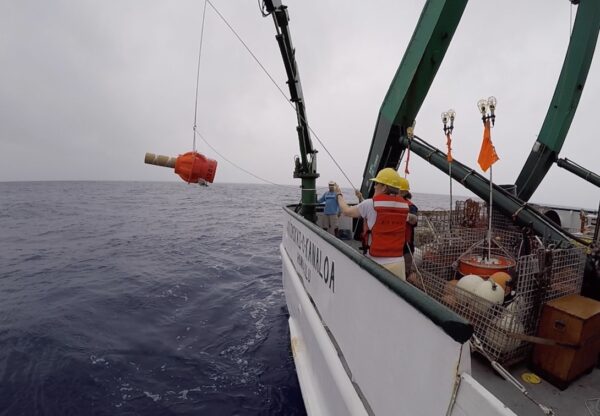New research lead by NOAA has shown using data collected by deep ocean robots, called Deep Argo floats, combined with historic data from research vessels has increased confidence that parts of the global deep ocean are warming at a rate of .002 to .004 degrees Celsius each year.
Greg Johnson, an oceanographer at NOAA’s Pacific Marine Environmental Lab and lead author of the study said: “This study confirms the previously reported deep ocean warming, and reduces the uncertainties about the global ocean heat uptake in waters below 1.2 miles (2000 meters), a key area of the ocean for predicting sea level rise and extreme weather.”
The Argo programme provides scientists with measurements of the evolving state of the upper ocean by collecting temperature and salinity profiles from the surface to 2,000 meters depth. The new research involving Deep Argo floats provides more detailed information about the geographic patterns of the deep ocean warming, which can help scientists better understand changes in the global ocean conveyor belt called the global meridional overturning circulation. With the floats being capable of recording measurements up to 6000 meters the research reveals that the deepest waters off Antarctica are a key warming hotspot, carrying heat north via the ocean conveyor belt. Another hotspot is in the deep waters off Greenland, where reduced cold water sinking, caused by atmospheric warming and ice melt, has disrupted the cooling process.
Deep ocean warming
More detailed information about deep ocean warming can help improve climate models used to prepare society for future changes in ocean and air temperatures that drive sea level increases, precipitation, tropical cyclone frequency and intensity, and their impacts on humans and the environment.
Johnson said that scientists first began seeing this deep ocean warming trend off Antarctica without the benefit of Deep Argo data some two decades ago. But the size of the warming trend was quite uncertain because of the sparse measurements available previously. The new data from Deep Argo have helped to reduce the uncertainty in the size of the trend by a factor of two.
“If we can build a global array we’ll be able to quantify the warming rate over shorter periods of time to see how that rate is changing. We have hints that the rate is changing but we need to be able to tease that out better. Measuring evolving temperature salinity patterns in the deep ocean will also aid in predicting climate changes decades in advance”, say Johnson.
The article titled “Refined Estimates of Global Ocean Deep and Abyssal Decadal Warming Trends” can be accessed here.
